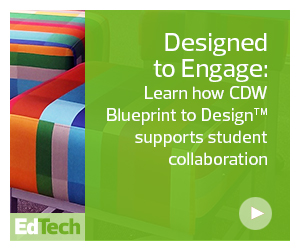Moving Beyond the Three R's to Boost Engagement
Rote and repetition-based teaching methods that underpin the three R’s — reading, writing and arithmetic — achieve the narrow-focus goal of getting students to remember specific pieces of information used for directed activities or to successfully complete exams.
Project-based learning, meanwhile, takes a more holistic approach by focusing on broadly applicable skills that transcend individual outcomes. As a result, measuring the efficacy of PBL requires examination of both qualitative and quantitative outcomes.
From a qualitative perspective, The Hechinger Report notes that according to schools, “project-based learning boosts student engagement and understanding.” In addition, teachers say students are more focused on projects and make critical interdisciplinary connections.
The Value in Breaking the Instructional Mold
Growing recognition that students need broadly-applicable 21st century skills in an increasingly technology-driven world now drives the development of new learning frameworks such as the ISTE standards, which focus on creating empowered, digital citizens capable of both computational thinking and innovative design. The ISTE standards build on the need for students to comfortably and responsibly use technology.
Project-based learning lesson plans align with this new approach by helping students build what Larmer calls “success skills” — but he notes that, despite positive results, “less than five percent of schools are doing project-based learning in a serious way.”
Still, he points to increasing interest: PBLWorks has grown fourfold over past few years, and between 10 and 20 percent of teachers are now trying PBL independently as they recognize the value of this approach.
MORE FROM EDTECH: Can video games work as a learning tool? Learn why some educators say yes.
To drive widespread adoption and impact, the future of PBL depends on four key factors:
- Student Buy-In: From developing virtual museum apps to creating prosthetic hands, projects must engage students and link to real-world applications. While knowledge in isolation is useful on mandated assessments, it translates poorly into practical use cases. Achieving student buy-in drives critical retention.
- Teacher Commitment: Larmer believes that “as more teachers experience PBL, they will teach it.” But shifting away from traditional methodologies isn’t always easy — as noted above, projects are designed to cover multiple skills across interconnected disciplines, requiring a reimagination of the effective classroom environment.
- Administrative Support: Mandated results drive the lesson plans of many teachers. Achieving success with PBL requires administrative support, especially when it comes to technology infrastructure. As noted by Larmer, because not all students have access to necessary technology at home, schools must be the primary provider of this project-based connection. This requires the adoption of secure, broadband connections along with new firewall and IAM protocols to ensure data defense without limiting information access.
- IT Integration: School IT staff are also part of the equation. Selecting the right tools is critical — from collaboration apps that allow students to connect asynchronously to smart boards and mobile technologies that align with student experience outside the classroom. IT teams are also responsible for ensuring the security of students’ data as they move beyond the virtual walls of the classroom into the world at large.
Classrooms are inherently insular, designed to facilitate learning at microscale to help students succeed in a macro world. The gap between existing education and growing demand for new-century skills, however, has created an opportunity for project-based approaches designed to break the mold and take students out the classroom, both physically and virtually.
The result of solving for real-world issues? Improved attention, greater retention and the foundation of 21st-century success.











